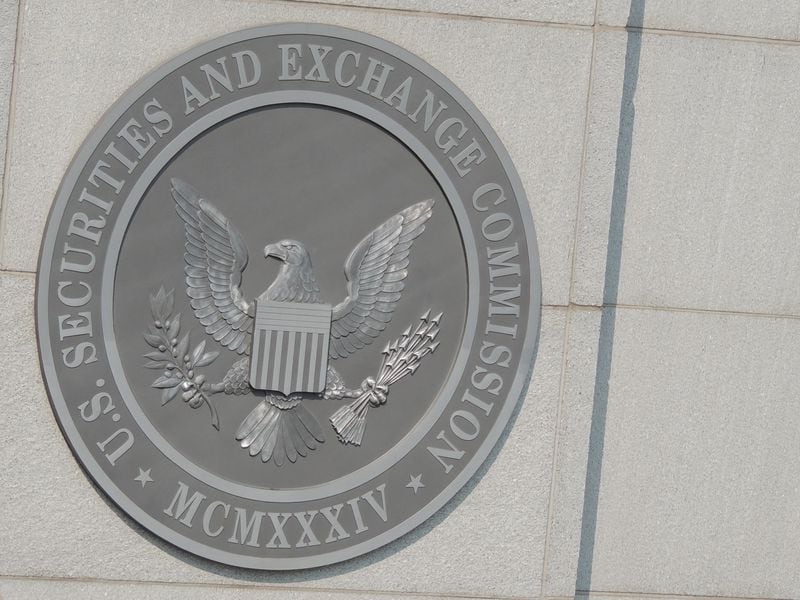Crypto for Advisors: Crypto and Compliance
In today’s issue, Beth Haddock from Warburton Advisers considers how the coming years are crucial for compliance and risk in crypto, as well as strategies that advisors can implement to protect their brand while serving clients as fiduciaries.
Leo Mindyuk from ML Tech explains what the U.S. Financial Innovation and Technology (FIT) Act is and why it matters in Ask an Expert.
You’re reading Crypto for Advisors, CoinDesk’s weekly newsletter that unpacks digital assets for financial advisors. Subscribe here to get it every Thursday.
Navigating Crypto Compliance: A Matter of Trust
Crypto investors must balance staying ahead of opportunities with avoiding the hazards of a volatile market. For investment advisors, the stakes are even higher: They must also safeguard their reputation against skeptical regulators and clients influenced by negative media.
The 2024 Edelman Trust Barometer underscores the importance of a trusted reputation and the vulnerabilities to changing expectations. Advisors should manage perceptions affected by crypto failures like FTX and Celsius, ongoing SEC litigation, and innovations such as Ethereum ETFs, tokenization of real-world assets, and stablecoins.
:format(jpg)/cloudfront-us-east-1.images.arcpublishing.com/coindesk/HSROZJZVLRDKLIMX7STDE7LDXM.png)
To protect their brand while serving clients as fiduciaries, advisors can implement these five strategies:
Five Strategies for Protecting Your Trusted Advisor Brand
-
Align Risk Tolerance, Fees and Compliance Testing
Advisors should align crypto investments with both their and their clients’ risk tolerance. Given the breadth of opportunities from meme coins to bitcoin ETFs, advisors should consider waiving fees on digital assets clients favor, but don’t fully trust or understand. Advisors should also adopt a risk management mindset beyond documented risk tolerance questionnaires. Fiduciary strategies include:
:format(jpg)/cloudfront-us-east-1.images.arcpublishing.com/coindesk/JTSHT56KOJBBRGRYZEY7VXYJOY.png)
2. Test SEC Marketing Rule Compliance
Advisors should prioritize the SEC marketing rule, especially in light of recent risk alerts and AI-washing cases. Advisors should not claim crypto expertise without the requisite skills and experience, and they must avoid letting social media trends drive marketing efforts. The regulatory status of crypto in the US is still evolving. Meanwhile, treat crypto as financial instruments akin to the EU’s MiCA standards and adhere to SEC and Finra guidelines. Marketing should:
:format(jpg)/cloudfront-us-east-1.images.arcpublishing.com/coindesk/NN2RSGCVF5DKLCMYB5MBXBRWVA.png)
3. Document a Balanced Investment Process
Until regulatory clarity is achieved, advisors should document consideration of the uncertainty, market volatility and investment basics in minuted investment committee meetings. Drawing from traditional finance experiences with illiquid assets during the 2008 credit crisis, advisors can demonstrate their fiduciary duty even in the face of uncertainty. In 2008, it was unclear how to meet fiduciary obligations for valuation; however, many met these with:
:format(jpg)/cloudfront-us-east-1.images.arcpublishing.com/coindesk/SIXIQBTIW5BUTNMQGJHOXMKMZU.png)
Advisors can adopt similar strategies for crypto asset investments.
4. Implement Best Practices for Service Provider Oversight
To safeguard their reputation when relying on specialized crypto advisors or other service providers, advisors should consider standards from the SEC’s proposed rule on Outsourcing. Advisors should understand and document:
:format(jpg)/cloudfront-us-east-1.images.arcpublishing.com/coindesk/KMN34VFTFNA5BB2TKNXDPZPF2I.png)
5. Monitor for Trust-Impaired Assets
The coming years are crucial for compliance and risk in crypto. While the EU is ahead with MiCA, the US is expected to catch up, indicated by bipartisan passage of FIT21, changing politics and the recent reversal of the Chevron doctrine. Advisors must be operationally resilient to mitigate regulatory uncertainty. Advisors should:
:format(jpg)/cloudfront-us-east-1.images.arcpublishing.com/coindesk/WHPYBBC2ZBBCFAW6JJBGMMAWXI.png)
Crypto is revolutionizing investment strategies for advisors just as clients are demanding more to earn their trust. By implementing these strategies, firms and their clients can profit from crypto opportunities without jeopardizing their trusted brand.
Ask an Expert
Q. What is the U.S. FIT Act?
A. The U.S. Financial Innovation and Technology (FIT) Act is designed to establish a comprehensive regulatory framework for digital assets. The goal of the U.S. FIT Act is to clarify the roles of different regulatory bodies, such as the S.E.C. and CFTC, concerning digital assets.
Q. Why does the U.S. FIT Act matter?
A: The uncertainty surrounding the regulatory framework for digital assets confounds market participants and continues to divide regulators and participants. This ongoing ambiguity and absence of clear regulations have negatively impacted the digital assets market. The Act aims to address concerns in numerous critical areas, such as regulatory clarity, consumer rights, taxation and innovation.
Q. Why is the Outcome of the U.S. Election important?
A: The outcome of the upcoming elections will be crucial in determining the future regulatory landscape and the direction of the digital assets market in the U.S. For instance, the composition of Congress can affect which bills, such as the FIT Act, get prioritized. Additionally, political stability and clarity in regulation can affect investor sentiment. Positive developments in legislation can lead to increased investment in digital assets and market growth.
Keep Reading
-
BlackRock’s BUIDL token, launched in March, surpassed
$500 million market value
on Monday, making it the first tokenized treasury product to achieve the milestone.
Note: The views expressed in this column are those of the author and do not necessarily reflect those of CoinDesk, Inc. or its owners and affiliates.
Edited by Bradley Keoun.









